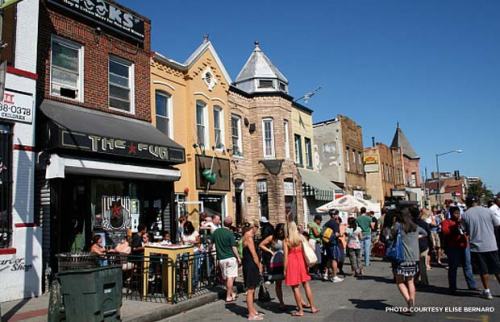
From PreservationNation writers Mike Powe and Jeana Wiser: "When you picture the heart of a thriving city, what image comes to mind? You might picture a New York avenue, lined with spectacular, towering skyscrapers. A better image? Look to the neighborhoods just beyond the shadows of downtown’s corporate and condo towers, in the modest (yet bustling!) blocks of older, smaller buildings. "Just as skyscrapers have their advocates, they also have their critics. Just last week, Treehugger’s Lloyd Alter presented a strong counterargument against growing cities into the clouds, suggesting that new towers often serve as inefficient, expensive homes that often succumb to issues of vacancy.
"Richard Florida has also suggested that skyscrapers often mute the 'spontaneous encounters that provide cities with so much of their social, intellectual, and commercial energy'. Meanwhile, Tim Halbur, communications director for the Congress for the New Urbanism, points out that while skyscrapers may boost a city’s supply of rentable space, they also pull life away from the street.
"As Jane Jacobs argued more than fifty years ago, smaller buildings are tremendously valuable places for small, local businesses, and they set the stage for Jacobs' 'ballet of the good city sidewalk'. Human-scaled neighborhoods reward walkers with interesting window displays and a variety of small businesses to consider (see the work of Jan Gehl for more information). Small-scale blocks have diverse spaces that see incredible intensity of use throughout the workday and into weeknights and weekends.
"This spring, the National Trust’s Preservation Green Lab will release a report that builds upon extensive city mapping and analysis to demonstrate the important role that smaller buildings and mixed-vintage commercial corridors play in fostering vibrant communities. We will show, with data, just how right Jane Jacobs was: Older, smaller buildings and diverse urban fabric play a critical role in supporting robust local economies, distinctive local businesses, and unforgettable places where people connect and unwind." Full post here.
